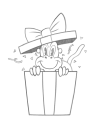It's time to use the layouts you made from the last lesson and rough-in the essential elements of our panels!
Newest
Chris Warthen
3mo
Watching David problem solve the last panel was helpful. Good to know that sometimes your first idea isnt the best solution, and you can just keep reworking and reworking it until it works. I think his knowledge of perspective is helpful here too....I think one of the issues I have is I think about perspective and backgrounds last instead of first.
M L Kuhn
2yr
Hi David, what are the dimensions of the "rough in" page? Is it like half the size of the larger page size? 6.5 X 8.5?
•
2yr
He draws the rough in pages at approximately 1/3 of the size, or roughly around 4" x 6". He sets up the reduced size layout in the episode "Composing the Page: Panel Layouts". Also feel free to experiment with different size compositions that work best for you!
Jaden Tew
3yr
I always feel my lines have to be clean when I put them down. I think that holds me back from getting more exploration and testing in when I sketch, so seeing a professional being very loose with their drawings on the roughs is very comforting! I love this class so far! Thank you, @David Finch for all your commentary and showing your thoughts on paper; it's very useful and informational.
@pablini
3yr
🔥🔥🔥🔥👌✌💚
Give a gift
Give a gift card for art students to use on anything in the Proko store.
Or gift this course:

About instructor
I’m a comic book artist for Image, Marvel, DC, and others.





